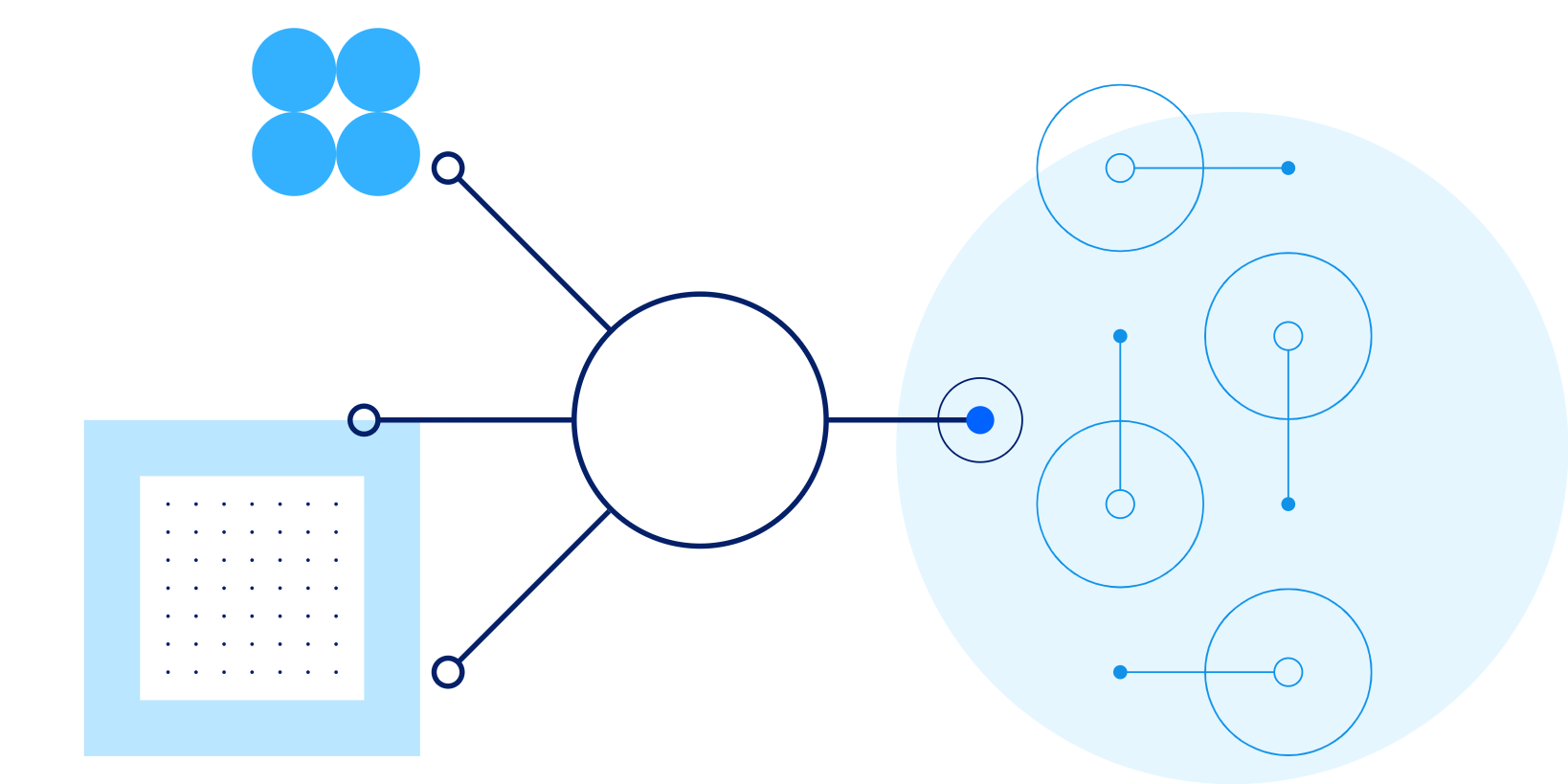About cookies on this site Our websites require some cookies to function properly (required). In addition, other cookies may be used with your consent to analyze site usage, improve the user experience and for advertising. For more information, please review your options. By visiting our website, you agree to our processing of information as described in IBM’sprivacy statement. To provide a smooth navigation, your cookie preferences will be shared across the IBM web domains listed here.
Perspectives
Digital transformation: your questions answered by Lindsay Herbert
22 August, 2019 | Written by: Lindsay Herbert
Categorized: Perspectives
Share this post:
Lindsay Herbert is Innovation Leader for IBM iX UKI and an IBM Inventor. In addition to advising company leaders worldwide on how to further their innovation agendas, Lindsay also invents breakthrough technologies for IBM itself. Her most recent invention is the IBM Instant Checkout, a revolutionary innovation for retail. This ground-breaking technology has been featured across international media, including BBC World News and a segment on BBC Click.
Lindsay is the author of Digital Transformation, a best-selling Bloomsbury business book that has received international praise for its practical framework on how to drive major change through real innovation. Lindsay is also a Governor for the Museum of London, appointed by Mayor of London Sadiq Khan to help inform the Museum’s own digital transformation journey.
Q. Why did you write the book Digital Transformation?
A. Good question. The phrase “digital transformation” has been haunting us for about ten years now. People talk about “avoiding disruption” but few know how to actually do it. A lot of other books on the market talk about “the why” but very few talk about “the how”. Innovation is what I do for a living, and I’ve learned all its lessons the hard way. Writing the book meant sharing my experiences and those from other successful innovation leaders around the world in order to help more companies truly innovate. In the same way that a rising tide floats all boats, I’m a strong believer that the more innovation there is in the world, the better the world will be for us all.
Q. How has your own experience shaped your view of digital transformation?
A. Well, I’ve definitely got the deep wounds and battle scars from actually making innovations real! For example, one of my latest inventions is the IBM Instant Checkout. I came up with it because I started to dread those six words: unexpected item in the bagging area. I knew technology could do better, so I set out to invent something truly frictionless. Let me tell you, the lessons of real innovation come hard and fast when you’re standing in a Shell gas station in North London, watching your invention go from a pristine and controlled lab environment to handling its first interactions with the general public during evening rush hour! These experiences throughout my career are where much of my insight, tips and advice come from. It’s helped shape my own perspective on digital transformation, along with the countless innovation interviews I conducted with company leaders from all around the world for the book.
Q. In a nutshell, what does “digital transformation” mean?
A. Real digital transformation means to become more adaptive to change itself. The “digital” part comes in because you can’t adapt to major change without leveraging data, technology and the ways of working brought about by the digital age.
That said though, despite having written the book Digital Transformation, I strongly urge everyone to stop using the term. It’s fallen into the dubious category of buzzwords, and everyone thinks it means something different. If you’re the CEO, you probably think it means ‘digitizing’ existing parts of the business. If you’re a digital agency, you probably think it means going “agile”. This phrase gets thrown around too freely, so you get lots of people all nodding along to decisions when they all have different interpretations – this can be very dangerous.
Q. Why is adapting to change so hard?
A. Because we’re human. That means we’re all a bit scared of doing things differently, and uncertainty makes us nervous. Especially if it relates to the job we do every day and how we make a living. And it’s a vicious cycle because when we do finally face our fears and realise that a new piece of technology or process is much better than what we had before, we become attached and get comfortable again… And then we’re wary of the next change. And the next. This is why changing to keep up with technology isn’t the real problem. The real challenge is changing attitudes towards change itself. The real secret to success is to learn to react to the small, early signs of change. If you can make that part of your business-as-usual, that’s half the battle won.
Q. Can you give us an example of digital transformation in action?
A. The Riijksmuseum in Amsterdam is my favourite example because it perfectly demonstrates that digital transformation isn’t just about putting new technology everywhere.
The mission of the Rijksmuseum is to preserve the art and history of The Netherlands and share it with the world. When it had to close for refurbishments, the Managing Director decided he didn’t just want to update the physical building. He wanted to digitally transform the museum too. So, he went on a pilgrimage around the world looking at famous galleries and museums – and what he saw in ‘digital experience’ depressed him.
It depressed him to see technology in every location that, instead of elevating the experience, was just a really obvious clue as to the last time each organisation had received a big injection of funding. If he walked into a gallery and saw desktop computers, he thought: poor gallery, you’ve not had any funding since the nineties. If he walked in and saw tablets: oh, good for you, you’ve had some recent funding. But the thing that was most depressing for him? People tapping on screens instead of looking at the priceless works of art!
When you walk into a gallery it should be the most beautiful, authentic space in the world – it’s the home of the genuine article. Why mess around with screens when you have the real thing right there in front of you? So, his first radical transformation decision was to ban all technology from the galleries of the Rijksmuseum.
But he knew technology had a place. He knew it could help the Rijksmuseum achieve a key part of its mission – to share the art and history of The Netherlands with the rest of the world. And so he championed and won the decision to make all Rijksmuseum art and artefacts available online, in high resolution, completely copyright free.
Initially, everyone was shocked at the idea of “giving away” their art – their intellectual property. But the Managing Director stood firm, arguing that some people will never be able to visit the Rijksmuseum in person, and to those people the museum has an obligation. An obligation to provide them access. And for those who are lucky enough to be able to visit in person, he stressed that they should be better informed.
Of course, it was a huge success. Visitor numbers were off the scale. And I asked him, when I interviewed him, what was the core of your argument when you were trying to convince the board that this was the right move to make? And he said, “Do you have Skype? Do you have Facebook? Yes. And yet you still go to the trouble of seeing your friends and family in person… No way is a digital replication ever going to replace the real thing.” That’s why this is my favourite story on digital transformation.
Q. You talk about a staged approach to transformation, which you call BUILD. Could you describe it?Absolutely.
A. BUILD is a set of actionable steps for how to innovate on a major scale. The acronym symbolises the scale, permanence and impact of digital transformation itself.
You’ll find detailed guidance on each stage of BUILD in my book. But if you don’t have time to read all 248 pages, here’s an overview:
BUILD: The 5 Stages of Real Digital Transformation
- Bridge: No company is an island, but many act like one.
If a company is in need of digital transformation, it’s because it’s no longer keeping pace with change – whether that change is in the form of customer need, competitive landscape, ability to leverage helpful new technologies, etc.
The first stage therefore, is to establish meaningful connections and feedback loops with the people the company is meant to serve, as well as the experts and allies who can help it serve them better. This will not only reveal how the company needs to change, but also if its innovations in response to it are having a positive effect.
- Uncover: Barriers to innovation are hiding in plain sight.
Outdated policies and processes are just some of the typical barriers that prevent a company from responding organically to external change. Unless you mitigate these issues, they will block innovation progress at every turn.
As such, the second stage is to find and mitigate the barriers that may stand in the way of the innovations you want to develop.
- Iterate: Innovation is iterative and collaborative, not a new silo.
The worst way to tackle innovation is to create an isolated team with no access to real users, and no access to the parts of the business that will be impacted if the innovation scales. It leads to projects developing solutions that fail to address real user needs, and/or require unnecessarily difficult changes to the rest of the business before they can be incorporated into existing infrastructure and processes.
The third stage therefore, is about prototyping and testing with real users incrementally to let the innovation team know if the solution is on the right track externally. However, it’s also about making sure you have meaningful involvement from all relevant parts of the business throughout its iterative development, in order to gain buy-in and ensure the prototype is suitable for scaling to real enterprise-level use.
- Leverage: Measure what’s treasured and use it to gain new ground.
All people are wary of change, and hearing about the company’s latest adoption of a new technology will only make people worry about the relevance of their own skills and their future job security.
Instead, the fourth stage is about sharing innovation results as business results (what people from the company already see as valued metrics), and only with those whose approval and buy-in you need to scale. This also gives them a role to play in taking the innovation forward, making them feel valued and part of the company’s transformation journey.
- Disseminate: Innovation isn’t learned on a training course, it’s learned by doing.
Technology and innovation skills are best learned working to solve a real goal, and with experienced people mentoring others on the job (and not in a training course).
As such, the final stage of Digital Transformation is to provide guidelines, incentives, and structures that enable and empower people to identify new opportunities for innovation, and to form multi-disciplinary groups to work out possible solutions. It’s also to provide leaders with decision-making frameworks for how to evaluate new innovations, determine what to scale, and decide how much to invest in new ideas.
Q. How can people get your help with innovation?
A. There are two ways! First, you can invite me to give a talk. I love sharing innovation success stories and the ‘how-to’ of innovation at events and leadership summits. In addition to discussing the challenges faced by the group, it also gives me a great opportunity to learn about their innovation success stories.
Second, I can help if you have an innovation problem that you’re trying to solve for your company. In addition to working directly with technology to help companies solve innovation challenges, I also have an extensive network of start-ups, scale-ups and tech companies that specialise in niche and cutting-edge solutions. By working with the right people and using the right methods, there are few innovation challenges that can’t be solved.
Read more
The IBM iX blog is available here https://www.ibm.com/blogs/insights-on-business/ibmix/
More on IBM’s services for Digital Strategy and Transformation https://www.ibm.com/services/business/digital

Lindsay Herbert
IBM iX Innovation Leader
More stories
By Helen Gowler on 3 October, 2024
Generative AI: driving a new era of HR transformation
Helen Gowler, Partner, EMEA Talent & Transformation Lead Today, I’m proud to be part of a company that’s committed to addressing gender bias in the tech industry. IBM is pioneering the use of AI to tackle this issue, and I’m excited to contribute to this effort. Our team is developing AI models that can detect […]
By Mark Restall on 18 July, 2024
Multi-Modal Intelligence Platform
Traditionally, data management systems provided only numerical or textual based business intelligence primarily for back-office users across finance, sales, customer management and supply chain. Today, we are increasingly seeing data management systems which drive key business functions requiring interrogation of multi-modal data sets from documents, presentations, images, videos to audio. This demands a more sophisticated […]
By Mark Restall and others on 16 July, 2024
The use of GenAI to Migrate and Modernise Organisational Core Programming Languages
GenAI is hugely powerful and supports a diversity of use cases by focusing on routine work – allowing people to focus time on value-add tasks, thus enhancing productivity. The focus of this use case is for an organisation which had previously focussed on a legacy set of tooling and programming languages and needed a way […]





























